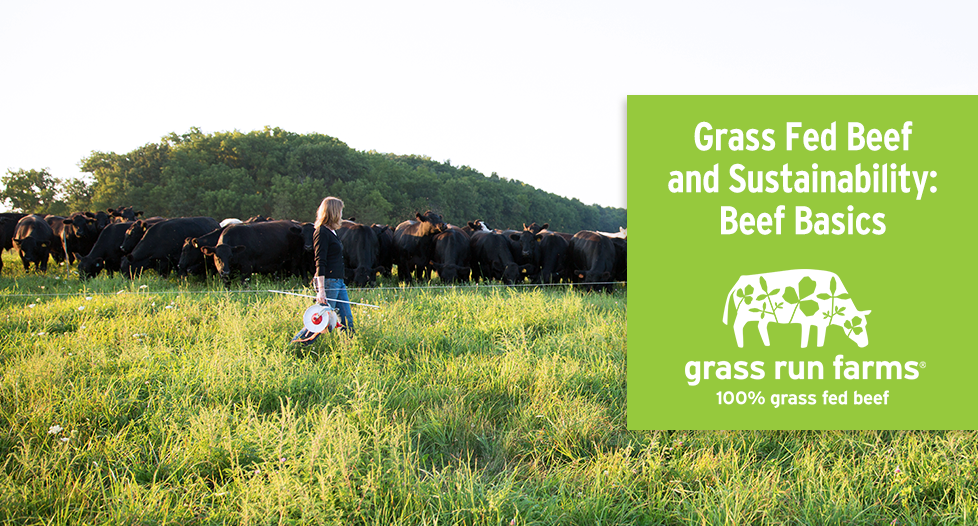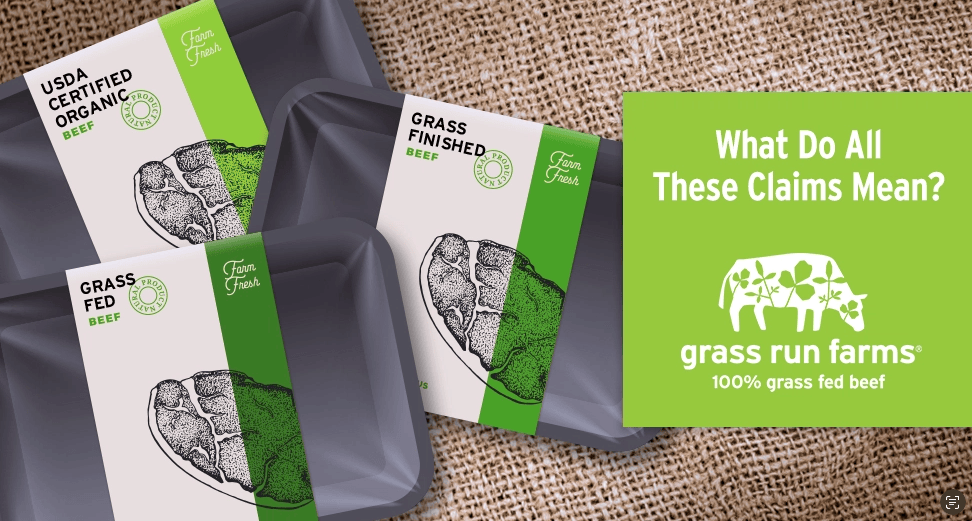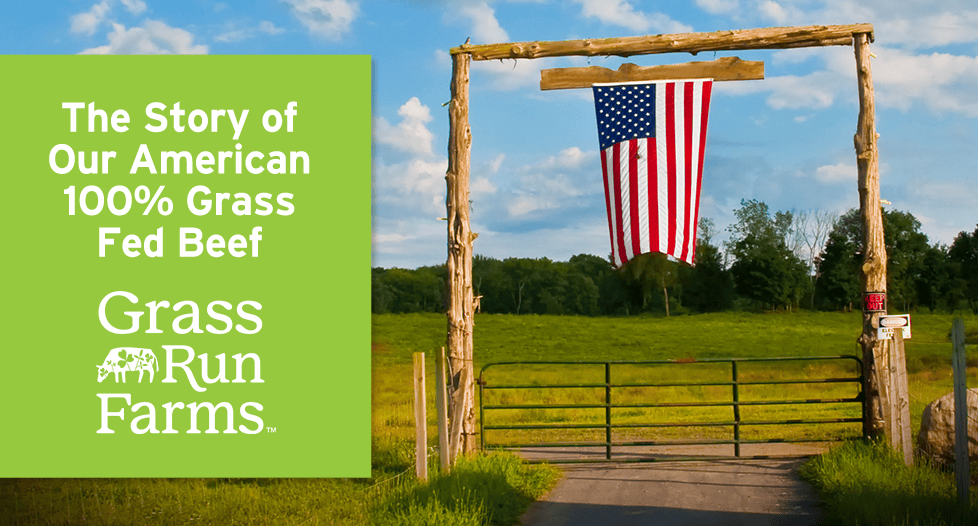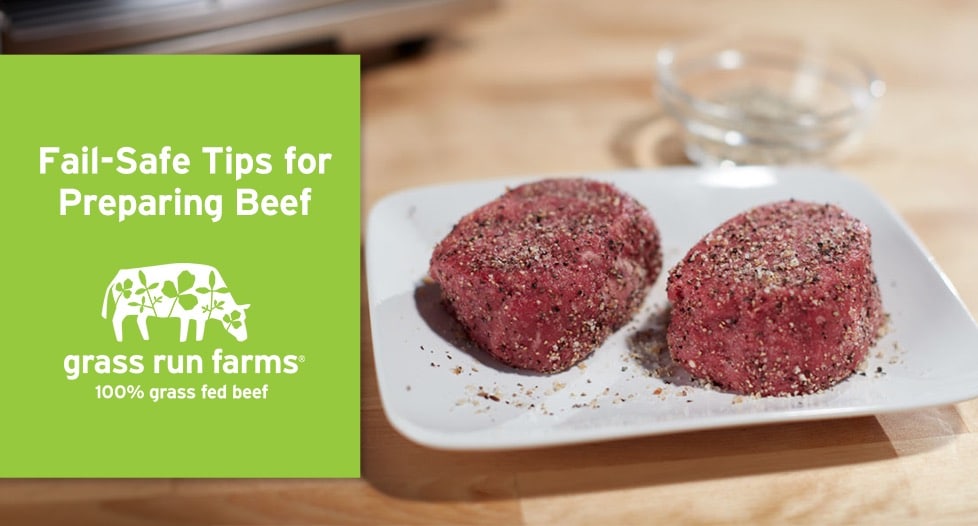November 4, 2024
“Sustainability” and “grass fed” are buzzwords that often go hand in hand and come with many questions. Is grass fed beef more sustainable than regular beef? What does sustainability actually mean? In this article, we tackle some of the toughest questions to help you understand just how green grass fed beef is.
What is sustainability?
Sustainability can carry many different meanings. Beef Checkoff defines sustainability in beef production according to three pillars: social responsibility, economic viability, and environmental stewardship.
- Social Responsibility: The guarantee of worker safety, a commitment to animal welfare, and the protection of the cultures and traditions of beef producers
- Economic Viability: The improvement of rural economies, dedication to ensuring the affordability of beef, and support of the livelihood of beef producers
- Environmental Stewardship: The safeguarding of biodiversity, wildlife habitats, and soil/rangeland health, plus ensuring that cattle utilize human-inedible food sources
How Grass Run Farms Defines Sustainability
We’re proud to align our sustainability efforts with the above pillars, as we focus on:
Water
Our cattle depend on water not only for drinking but also for rain to grow the grass and forage cattle consume. Experienced farmers and ranchers work year-round with the natural cycle of the soil and water supply to grow the food that cattle consume throughout the year.
Energy and Climate Change
Reducing Grass Run Farms cattle’s impact on climate change is critical. To do this, our producers utilize resources efficiently to meet the needs of the animals and maintain healthy soils and grasslands.
Animal Welfare
Our cattle have free access to pasture during the local growing season for many reasons, but the primary purpose is to keep the herd healthy and make sure cattle have ample, consistent amounts of feed throughout the winter—particularly when forage availability is limited.
Team Member Health and Safety
We believe that committing to team member safety is not only essential to success but is also the right thing to do. As part of the JBS USA family of brands, our systems focus on training and educating team members on safety while working proactively to eliminate work hazards.
Product Integrity
Our cattle receive grass and forage year-round, resulting in high quality, delicious, Always American, Grass Fed Forever beef. Products are all held to strict production standards and cattle are raised with no animal by-products, antibiotics, or added hormones.
How does beef production impact the environment?
Greenhouse Gas (GHG) Emissions
Annual GHG emissions related to beef production and consumption in the U.S. equal about 3.7% of total GHG emissions.
However, greenhouse gas emissions from beef production in the U.S. are decreasing—compared to 50 years ago, we now produce 20% more meat using about 15% fewer cattle. Beef producers, ranchers, crop growers, and suppliers are working hard to reduce emissions further. They are pursuing more efficient feeding, new technology like methane inhibitors, and more.
GHG: Grass Finished vs. Grain Finished
You might be wondering what has a smaller carbon footprint, grass finished beef or grain finished beef? Grain finished beef has a lower carbon footprint. However, grass finished beef contributes to sustainable beef production through upcycling and rotational grazing.
Upcycling
Cattle are called upcyclers, as they take otherwise inedible materials, consume them, and transform the materials into beef that’s packed with essential nutrients.
Cattle help us make the most of our land, too. Approximately 29% of U.S. land is pasture or rangeland, and is too wet, rocky, steep, or arid to support cultivated agriculture. Cattle can graze these areas and turn unused space into protein that feeds families like yours.
Rotational Grazing
Rotational grazing, one practice under the umbrella term of “regenerative agriculture,” refers to frequent moving of cattle through a series of smaller subdivided sections of pasture so that only one portion of pasture is grazed at a time. With this approach, plants are able to rest and regrow to grazing height and farmers and ranchers are able to mitigate climate change impacts. Rotational grazing benefits the environment in many ways, including:
- Improving soil structure, biodiversity, and carbon sequestration
- Preventing overgrazing that could lead to soil erosion
- Increasing pasture drought resilience
Dedication to Local Economies
Though demand for grass fed beef is growing, grass fed beef production remains a small segment of the total beef production economy. Our family ranches are all located in the Midwest, and our ranchers often have a direct connection to local buyers.
How You Can Help Protect the Environment as a Beef Eater
Emissions, upcycling, and rotational grazing are all part of the beef and sustainability story, but food waste is also a key player.
“Perhaps one of the more important considerations in the sustainability of beef, as well as all foods, is consumer waste where the estimated waste of 20% increases all metrics or measures of the sustainability of beef consumption by 25%.”
–Pasture Systems & Watershed Management Research, USDA
Here are a few green-minded food safety tips to reduce food waste at home:
- Freeze any beef you don’t plan on using right away within 1-2 days after purchase to avoid spoiling
- Plan ahead and repackage beef into proper portion sizes for your family before freezing
- Rotate the product in your freezer to place the oldest product in front so that you don’t miss any expiration dates
- Keep cutting boards from raw beef and fresh produce separate to avoid cross-contamination that results in food waste
Learn more about our approach to raising great-tasting American grass fed beef and explore some delicious ways to use grass fed beef to create memorable meals.
Note: This article was originally published in 2020, then updated in 2024.










